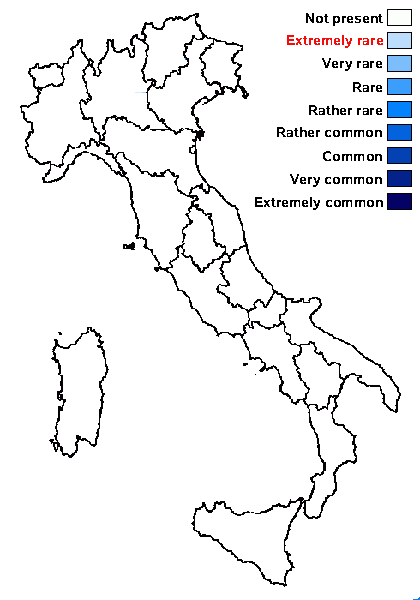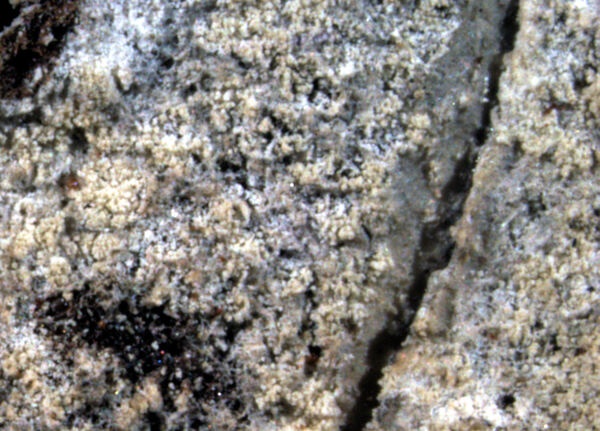Lecanora norvegica Tønsberg
Sommerfeltia, 14: 165, 1992
Synonyms:
Distribution:
Description: Thallus crustose, sorediate, thinly episubstratic, pale grey-white, forming a few cm wide patches, continuous in central parts, areolate in peripheral parts, the areoles small, up to 0.2 mm wide, slightly convex to tuberculate, the thallus sometimes delimited by a cottony-arachnoid, whitish prothallus; soralia at first discrete, regularly rounded and up to 0.3 mm wide, but soon coalescent into several mm wide patches with a leprose surface, with fine (up to 25 µm wide), pale green to grey-green soredia, sometimes gathered in up to 50 μm wide consoredia. Apothecia unknown. Photobiont chlorococcoid. Spot tests: thallus K+ bright yellow (sometimes turning red-brown), C-, KC-, P+ rust-red. Chemistry: thallus (including soralia) with atranorin and protocetraric acid, sometimes with traces of roccellic acid.Note: on trunks of conifers in sites with a continental climate. A mainly northern species, also known from the Western Alps (Switzerland); to be looked for in the Italian Alps. For further details see Malíček & al. (2017).
Growth form: Crustose
Substrata: bark
Photobiont: green algae other than Trentepohlia
Reproductive strategy: mainly asexual, by soredia, or soredia-like structures (e.g. blastidia)
Subcontinental: restricted to areas with a dry-subcontinental climate (e.g. dry Alpine valleys, parts of Mediterranean Italy)

Predictive model
Growth form: Crustose
Substrata: bark
Photobiont: green algae other than Trentepohlia
Reproductive strategy: mainly asexual, by soredia, or soredia-like structures (e.g. blastidia)
Subcontinental: restricted to areas with a dry-subcontinental climate (e.g. dry Alpine valleys, parts of Mediterranean Italy)

Predictive model
 INDEX FUNGORUM
INDEX FUNGORUM
 GBIF
GBIF





